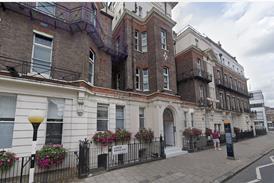
In Swift v Carpenter [2018] EWHC 2060 (QB) the claimant, aged 39, had suffered serious lower-limb injuries in a road traffic accident. Liability was agreed and in 2018 the quantum assessment came before Mrs Justice Lambert in the High Court, who made awards on various heads of claim. The final issue for consideration was a claim for special accommodation. It was agreed by the parties that the claimant required a new house, given her injuries, and that it was reasonable that she move. Lambert J set the extra cost of the proposed special accommodation at £900,000.
However, the effect of the Court of Appeal’s decision in Roberts v Johnstone [1989] QB 878 meant that the claimant would recover a nil award in respect of the additional capital cost of special accommodation.
In that case, the Court of Appeal had awarded the notional cost of temporarily foregoing the use of the money required to fund the purchase of special accommodation. At that time, the notional cost of discount rate was 2% per annum but this had been subsequently varied by the lord chancellor when exercising powers under section 1 of the Damages Act 1996 and it had now decreased to minus 0.75% in March 2017.
The underlying rationale for the court’s approach in Roberts was that it was wrong, as a matter of principle, to award the claimant the full capital cost of special accommodation, because such an approach would result in overcompensation or a ‘windfall’ as, upon the claimant’s death, her estate would benefit from an asset which had increased in value.
In the Court of Appeal, Irwin LJ (pictured) said the first issue was whether the court was bound by the decision in Roberts. The present case could not be brought to fall into any of the categories identified in Young v Bristol Aeroplane Company Ltd [1946] AC 163 which permitted the Court of Appeal to depart from its earlier decisions. However, many of the decisions at an appellate level bearing on the approach to calculating damages were not decisions of principle, but rather guidance based on the conditions of the day. The reasoning in Roberts was a means to an end (fair compensation, not overcompensation) rather than principle. Therefore, if there was a justified call to alter the means by which that end was reached, and another means was available, the court should be ready to contemplate a change in the guidance.
The parties had instructed an expert economist together with actuaries and a financial adviser. The expert economist recognised that there was an intrinsic problem in compensating for a more expensive house purchase than would otherwise arise. Housing did not just provide the owner with somewhere to live, but also represented a capital asset that could be sold. Irwin LJ said that the court would accept that it was no longer a safe prediction that property prices would rise or even hold their value over the ensuing decades.
Irwin LJ also considered the concerns that had been expressed about Roberts by the Injury Committee of the Civil Justice Council. In the context of modern property prices and a negative discount rate, the formula in Roberts no longer achieved fair and reasonable compensation for an injured claimant. The claimant had showed at trial that she had a need for £900,000 which could only be awarded as a lump sum. That should not be withheld because of a potential capital windfall, very probably to her estate after her death. However, a windfall should be avoided if at all possible. A number of alternative methods of valuation had been put forward, but the court would adopt the method of awarding the full capital value of the £900,000, and then reduce it to reflect the value of the notional reversionary interest in that sum, which would be a value based at the hypothetical date of death. This would be the value of the ‘windfall’.
The proper approach was now to establish as best as possible the value of the reversionary interest in the incremental part of the property to be purchased. On that issue expert evidence had been put forward by the parties. Such interests were typically found in assets left in trust by a testator to provide his widow with an income for life.
Despite the very small market in reversionary interests, Irwin LJ said that the market approach was the correct way to reach a valuation. However, he would take a cautious approach in relation to the discount rate suggested by the evidence of the expected return in that market and adopt a rate of 5%. This was the rate which the defendant’s expert, the only expert with actual experience of the market, had indicated he had seen in practice.
Irwin LJ said that this new guidance should not be regarded as a straitjacket to be applied universally and rigidly, and it might be in appropriate in some cases. However, for longer lives lived during conditions of negative or low positive discount rates, the guidance should be regarded as enduring. The appropriate award, applying a 5% discount rate, and therefore taking the value of the reversionary interest to be £98,087, would be damages of £900,000 less £98,087, which was £801,913.
The other members of the Court of Appeal, Davies LJ and Underhill LJ, agreed with Irwin LJ.
Malcolm Johnson is a senior solicitor at Hudgell Solicitors






























No comments yet